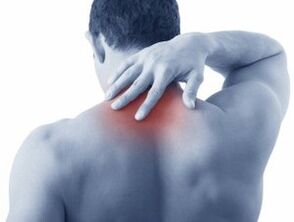
Osteochondrosis - dystrophic changes in articular cartilage and bone tissue are increasingly found.
Separate symptoms of osteochondrosis can also occur at 18 years.This is explained by a sitting lifestyle.
The disease can affect each area of the spine, distinguished 52 varieties of osteochondrosis.
The first place belongs to the lumbosacral, the second place in terms of the incidence of appearance belongs to cervical osteochondrosis (osteochondrosis of the cervical vertebrae).
Cervical osteochondrosis - characteristics, stages of development
There are 4 stages of cervical osteochondrosis that have their own characteristics and symptoms.
- The first stageThe cartilage is affected.A person suffering from first -degree osteochondrosis experiences some discomfort, muscle tension, but nothing more.The symptoms at this stage are minor and do not cause a patient to see a doctor.
- The second stageOsteochondrosis is characterized by the beginning of the destruction of the fibrous ring, reducing the lumen between the vertebrae, while it is possible to pinch the vertebrae and the appearance of unpleasant sensations.The most common is second -degree cervical osteochondrosis.
- The third stageThe disease may be characterized by the more increasing destruction of the intervertebral disc, the deformation of the vertebrae bodies, the formation of bone processes, the appearance of hernia (convexity of the fibrous ring).
- In the fourth stageOsteochondrosis is painful to move, the vertebrae are destroyed and highly deformed.
Cervical osteochondrosis is complicated by small vertebrae sizes.The joint of the back bone of the cervical vertebrae is punctured by nerve endings, blood and lymph vessels.
Characteristics of cervical osteochondrosis.
- The movable cervical region is articulated with a sedentary chest.This increases the load of the vertebrae of the cervical region.
- The vertebrae of cervical osteochondrosis vertebrae appear in a lateral direction.
- The peak artery, which passes through the side holes of 2-6 cervical vertebrae, is involved in destructive processes.
Symptoms and signs of cervical osteochondrosis.

Frequent manifestations of cervical osteochondrosis are a headache that occurs in the back of the head and spread in the parietal and temporary regions.During the exacerbation of the disease, the pain is so intense that it is difficult to rotate or tilt your head.
The compression of the spinal artery with cervical osteochondrosis is manifested by dizziness, flickering flies in front of the eyes.With a sharp turn of your head, you can lose consciousness.The pain is transmitted in their hands and shoulders.
The defeat of the spinal artery is also manifested in violation of coordination, hearing and vision.
When he presses the nerve into the vertebrae of the cervical region, the pain is descended from the neck to the shoulder and through the arm to the fingers.The patient experiences tingling, the appearance of a guy, the numbness of the fingers, the forearms, the brushes.The pain intensifies until the morning, gives the chest.
Damage to the spinal artery is manifested by throbbing pain in the arches of the head, nape, temples.Loss of consciousness, nausea, pain in the eyes are possible pain in the heart.
Disruption of blood circulation can lead to impaired memory and decrease in intelligence.Pressure pain in the heart resembles the symptoms of real angina.
The causes of the disease are the reduction of physical activity with the age of physical activity, the appearance of excess weight, hypothermia, disruption of congenital or acquired pins, injuries.
The disease can also affect the people involved in hard work and office workers.



































